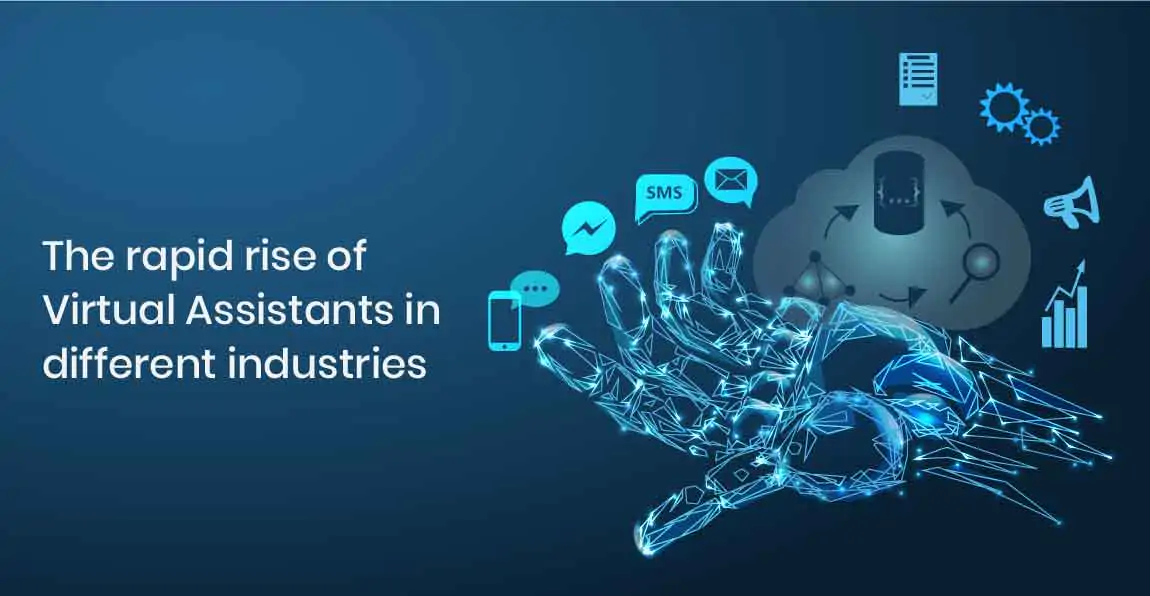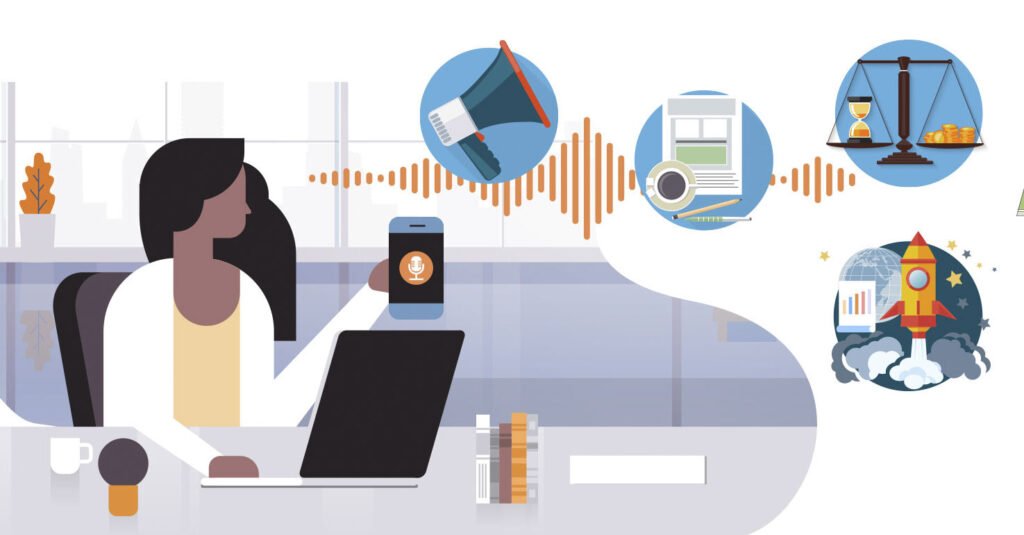Revolutionizing Industries with AI-driven Virtual Assistants
In today’s fast-paced digital age, artificial intelligence (AI) has become a game-changer, revolutionizing various industries. One of the most exciting applications of AI is the rise of AI-driven virtual assistants. These intelligent virtual helpers have quickly become an essential part of our lives, simplifying tasks, boosting productivity, and providing personalized assistance. In this article, we will delve into the world of AI-driven virtual assistants, exploring their impact on different sectors and their promising future. From understanding user commands to automating repetitive tasks, these virtual assistants are here to make our lives easier and more efficient.
1. Introduction
In today’s fast-paced digital age, artificial intelligence (AI) has emerged as a revolutionary force, transforming various industries. One of the most significant applications of AI is the development of virtual assistants. These AI-driven virtual helpers have become an indispensable part of our daily lives, simplifying tasks, enhancing productivity, and providing personalized assistance. In this article, we will explore the rise of AI-driven virtual assistants, their impact on different sectors, and their promising future.
2. Understanding AI-driven Virtual Assistants
AI-driven virtual assistants are designed to simulate human-like interactions and cognitive abilities. They leverage machine learning algorithms, natural language processing (NLP), and deep learning to understand user commands and respond appropriately. This ability to comprehend context and user preferences allows virtual assistants to offer tailored experiences.

3. Evolution of Virtual Assistants
Virtual assistants have come a long way since their inception. Early versions were simple, with limited functionalities, but advancements in AI technology have led to the creation of more sophisticated virtual assistants capable of handling complex tasks. Today, virtual assistants like Siri, Google Assistant, and Amazon Alexa have become household names.
4. The Advantages of AI-driven Virtual Assistants
AI-driven virtual assistants excel at automating repetitive tasks, saving users considerable time and effort. From setting reminders, managing calendars, to composing emails, these assistants efficiently handle mundane responsibilities, allowing users to focus on more critical tasks. By delegating these routine duties to virtual assistants, individuals can experience increased productivity and improved work-life balance.
Additionally, AI-driven virtual assistants can quickly retrieve information from vast databases, eliminating the need for manual research. Whether it’s finding the latest news, searching for specific product details, or providing real-time weather updates, virtual assistants can deliver accurate information promptly.

5. Impact of AI-driven Virtual Assistants on Industries
The integration of AI-driven virtual assistants has transformed several industries, revolutionizing the way they operate and providing numerous benefits. Let’s explore the impact of virtual assistants in various sectors.
Healthcare Sector
In the healthcare sector, AI-driven virtual assistants have proven to be valuable tools. They can support healthcare providers by streamlining administrative tasks, such as scheduling appointments and managing patient records. This automation frees up time for medical professionals to focus on patient care and complex medical decision-making. Virtual assistants can also assist patients in accessing healthcare information, monitoring their health status, and reminding them to take medications. By empowering both healthcare providers and patients, virtual assistants contribute to improved efficiency and patient outcomes.

Customer Service Industry
Virtual assistants have significantly impacted the customer service industry. They provide round-the-clock support, helping customers resolve common queries and issues promptly. AI-driven virtual assistants can understand customer inquiries and provide relevant information or solutions without the need for human intervention. This not only saves time but also enhances the overall customer experience. Virtual assistants can handle multiple inquiries simultaneously, reducing customer waiting times and increasing customer satisfaction levels. The integration of virtual assistants in customer service has proven to be cost-effective for businesses, eliminating the need for large customer support teams.
Education Field
The education field has also experienced the benefits of AI-driven virtual assistants. These assistants can provide personalized learning experiences, catering to the individual needs of students. Virtual assistants can adapt to different learning styles and offer additional resources or explanations when required. They can also assess students’ progress, provide feedback, and offer tailored recommendations for improvement. Virtual assistants in education empower students to learn at their own pace, allowing for a more personalized and effective learning journey.

Business and Productivity
AI-driven virtual assistants are invaluable assets in the business and productivity domain. They can help with tasks like organizing meetings, managing to-do lists, and tracking deadlines. Virtual assistants can also assist in conducting market research, generating reports, and analyzing data. By automating these mundane tasks, virtual assistants free up time for professionals to focus on strategic decision-making and high-value activities. This increased efficiency and productivity contribute to the growth and success of businesses.
Conclusion
The rise of AI-driven virtual assistants has revolutionized various industries, providing time-saving capabilities and enhancing productivity. These intelligent systems have positive impacts across sectors such as healthcare, customer service, education, and business. As AI technology continues to advance, the capabilities of virtual assistants will further expand, leading to even more innovative applications. With their ability to understand natural language, simulate human-like interactions, and adapt to user preferences, AI-driven virtual assistants are poised to become even more integrated into our daily lives, simplifying tasks and improving overall experiences.

FAQs about AI-driven Virtual Assistants
1. What is an AI Virtual Assistant?
An AI Virtual Assistant is a program that uses natural language processing to perform and complete daily tasks given by humans in a natural language. These assistants bridge the gap between the digital and human worlds, assisting both consumers and businesses with a variety of tasks. They can pull information and complex data from conversations by interpreting and processing them effectively using powerful Artificial Intelligence (AI), RPA, natural language processing, and machine learning Source 1, Source 2.
2. How do the AI Virtual Assistants work?
AI Virtual Assistants work by drastically simplifying our interactions with technology. They stand on a firm foundation of AI technology which includes a Wake word detector, Automatic Speech Recognition (ASR), Natural Language Understanding (NLU), Dialogue Manager (DM), and Text to Speech (TTS). These functions need to work seamlessly for the AI virtual assistant to provide a helpful response. The technology needs to cope with the ambiguity and the breadth of natural language at large. It also depends a lot on machine learning, a group of AI algorithms that identifies user patterns and makes decisions with minimal human intervention Source 1.
3. What tasks can an AI Virtual Assistant help with?
AI Virtual Assistants can help with several different activities. For consumers, they can answer basic queries and make recommendations based on the user’s profile, previous behaviors, and other activities. In a business setting, they can manage incoming mail, onboard new staff, perform system updates, manage information, and even process transaction orders. They can also automate routine activities Source 2.
4. How does an organization benefit from using AI Virtual Assistants?
AI Virtual Assistants can increase productivity and provide support for an organization’s personnel and customers. They can handle basic tasks, allowing employees to spend more time on other tasks. This not only enables the organization to provide more and better services, but also save money in the process. As AI and machine learning advance, virtual assistants will become more intelligent and provide more options Source 2.
5. How are AI Virtual Assistants developed?
The development of AI Virtual Assistants involves data gathering and processing, answer curation, and strategic monitoring and ongoing training. Data gathering and processing involve collecting all the existing data to help build the AI assistant. Answer curation involves mapping out all the possible responses the virtual assistant can return. Strategic monitoring and ongoing training involve constant review and improvement of the AI assistant based on captured data Source 4.
6. What are the challenges in developing AI Virtual Assistants?
Developing AI Virtual Assistants can be challenging. It requires a clear understanding of what users want and need, designing conversations that take user context, needs, and the bot’s capabilities into account, and collecting data that represents real user interactions in real environments. It also requires a high level of specialized knowledge and tools Source 5, Source 6.
7. What is the future of AI Virtual Assistants?
The future of AI Virtual Assistants is promising. They are expected to become more customizable, conversational, and contextual. They will continue to evolve to better understand the nuances, context, and ambiguities of human language. As AI and machine learning technologies advance, these assistants will become more intelligent and capable of performing a wider range of tasks Source 1, Source 6.



